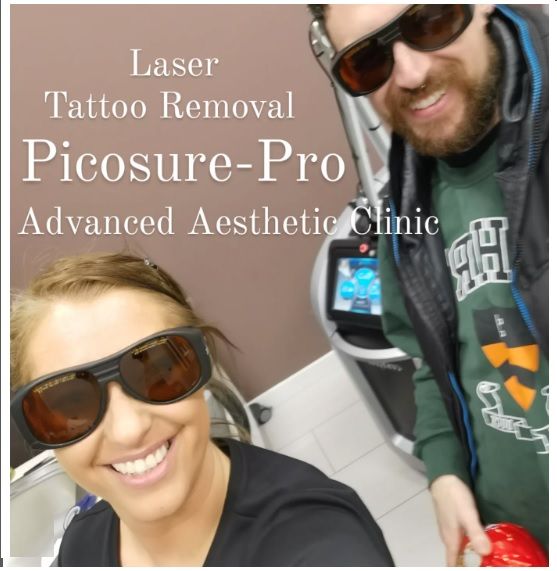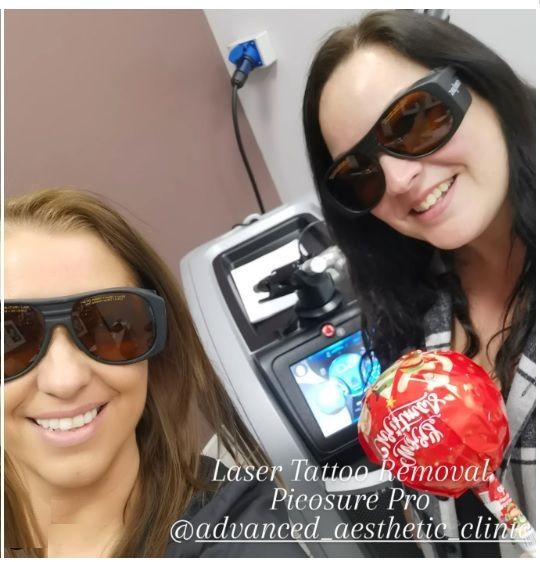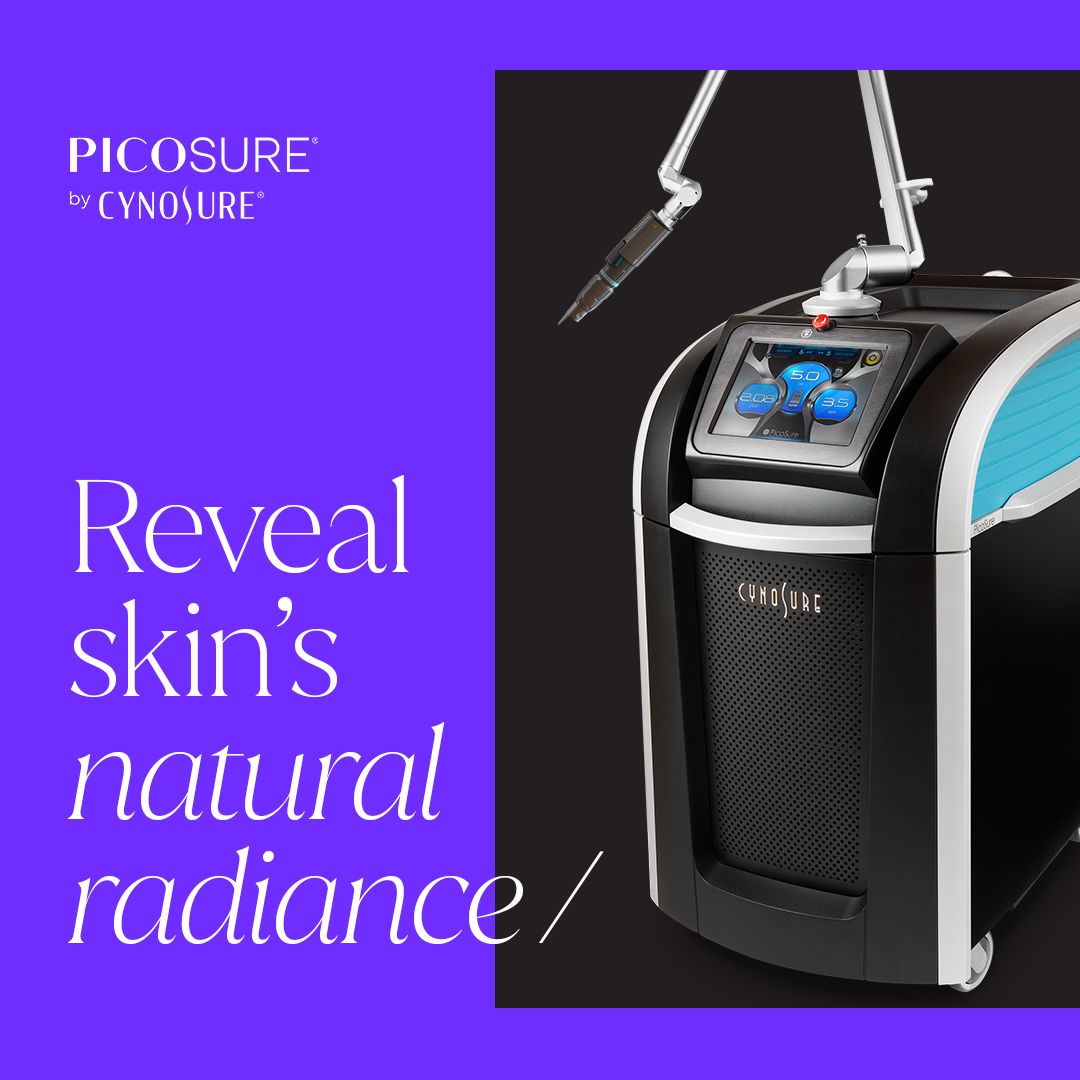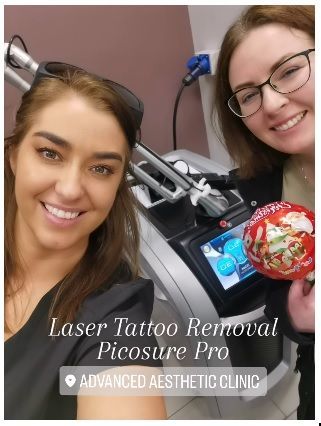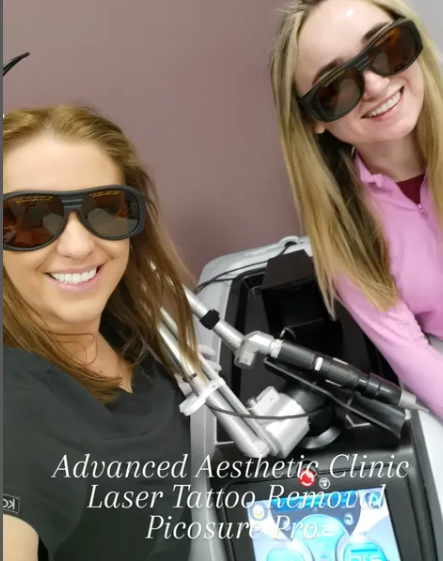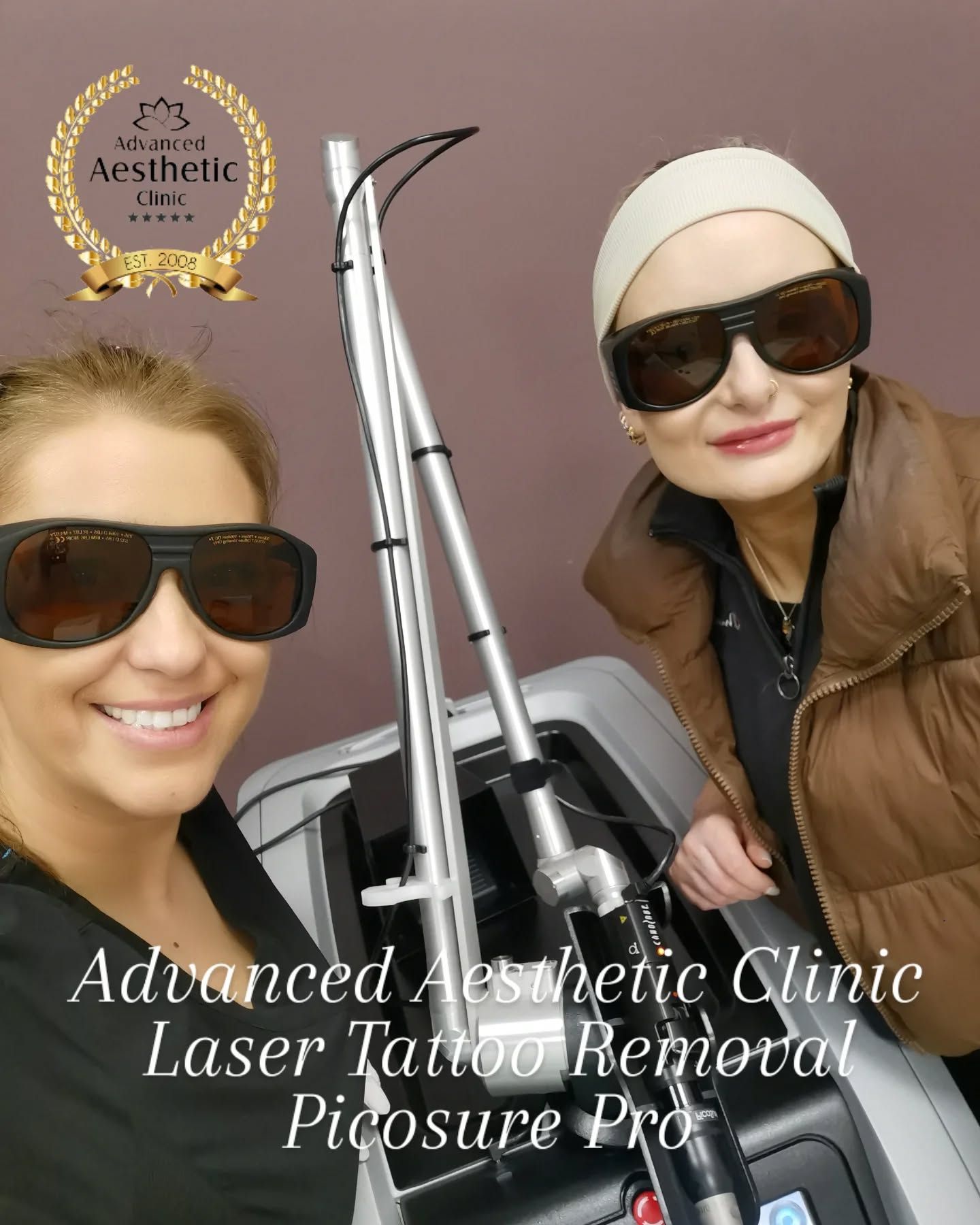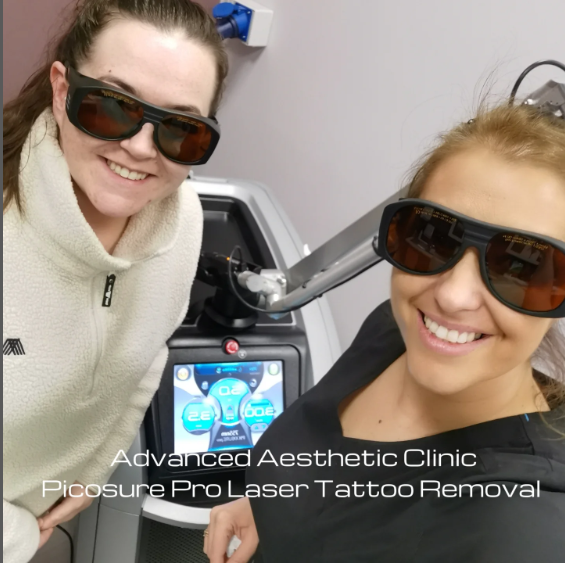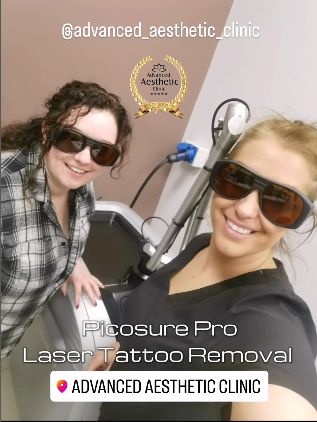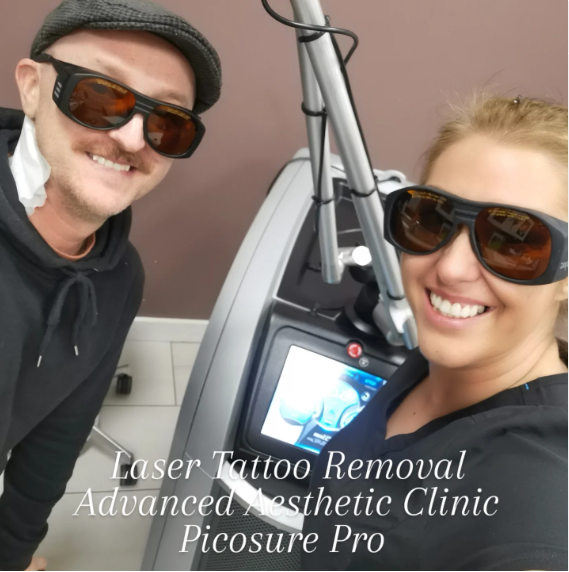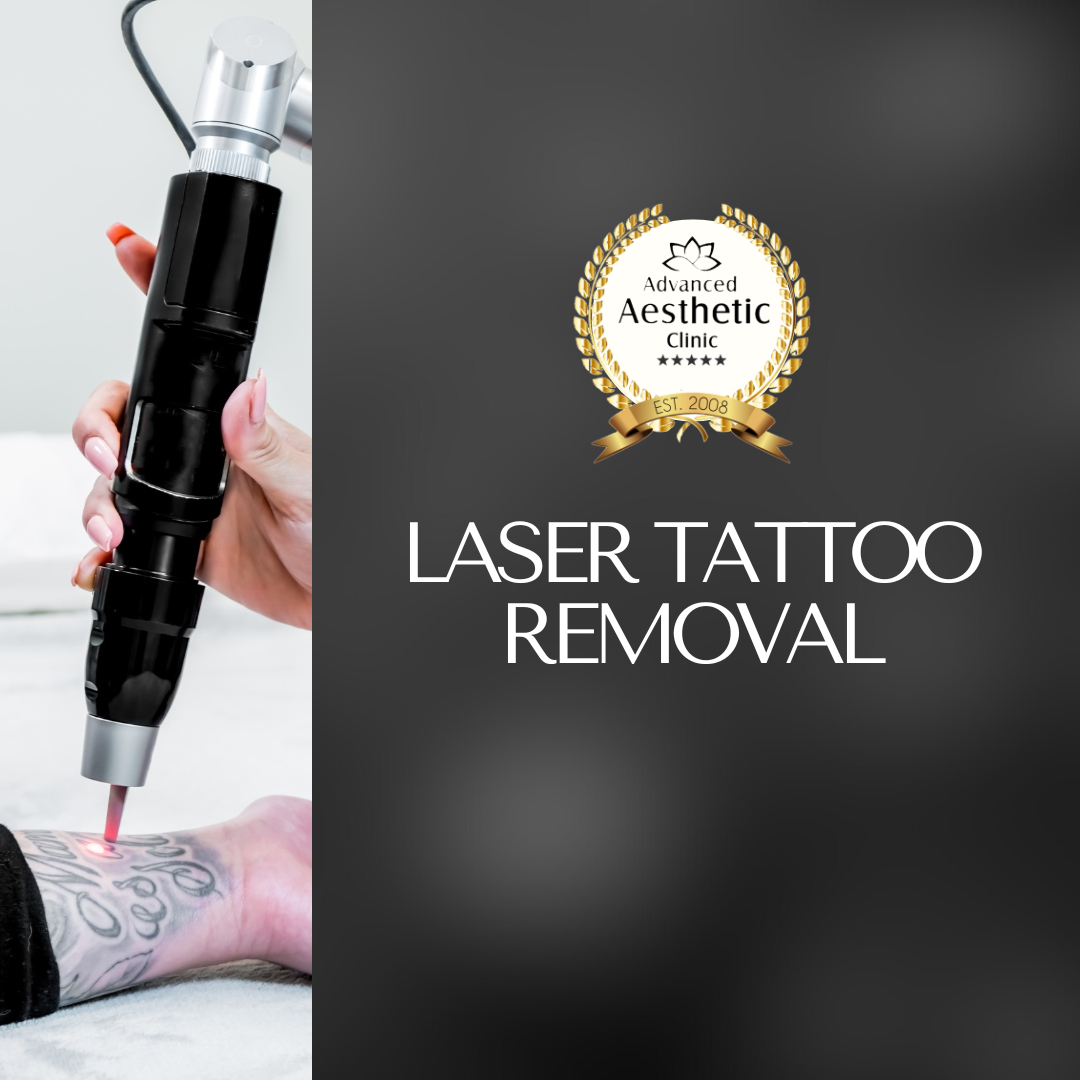Laser Tattoo Removal by Natalia
Watch as Natalia, our Laser Tattoo Specialist, skillfully removes tattoos line by line with precision and care. Her expertise helps clients create a clean canvas for future tattoo designs, making it easier to achieve their vision of a new, fresh look.
Whether you're considering a new design or simply want a change, Natalia’s meticulous technique ensures safe and effective removal, paving the way for endless possibilities.
Book a consultation to see how we can help bring your new tattoo ideas to life!
All skin types.
All tattoo types.
No matter how stubborn.
- Multicolored tattoos, including blues and greens
- Hard-to-remove black ink
- Stubborn, previously treated tattoos
How it works?
Throughout a treatment laser energy is delivered to the unwanted tattoo, targeting the ink and breaking it down into smaller particles.
The tiny particles are then eliminated through the body’s natural processes, resulting in faster clearance with fewer treatments than traditional lasers.
Contraindications for
Laser Treatment
Before undergoing laser treatment, please ensure that none of the following contraindications apply to you:
- Hypersensitivity to light in the near-infrared wavelength region.
- Sun exposure or artificial tanning within 4 weeks before or after the procedure.
- Taking medication that increases sensitivity to sunlight.
- Light-induced seizure disorders.
- Active localized or systemic infections or an open wound in the treatment area.
- Pregnancy and/or breastfeeding.
- Significant systemic illnesses or illnesses localized in the treatment area.
- Common acquired nevi predisposed to the development of malignant melanoma.
- Presence of herpes simplex in the treatment area.
- Receiving or having received gold therapy.
- Unrealistic expectations of the treatment outcomes.
Cautionary Criteria
& Precautions
Before undergoing laser treatment, please consider the following:
- Unprotected sun exposure within 4 weeks prior to the procedure, including tanning beds, tanning products, creams, lotions, and sprays.
- A history of immunosuppression, immune deficiency, or autoimmune disorders.
- Coagulation disorders or taking anticoagulant medications, including aspirin.
- Medications that alter the wound-healing response.
- A history of keloid formation.
- A history of skin cancer or suspicious lesions in the treatment area.
- Tattoos resulting from gunpowder or combustible materials.
- Botulinums (Botox, Xeomin, Dysport) within 2 weeks prior, cosmetic dermal fillers within 3 weeks prior, or implants in the treatment area.
- PCOS or risk of paradoxical hair growth.
Client Pre-treatment Guidelines
- Test spots are recommended prior to treatment to determine safe and effective treatment parameters for darker skin complexions (olive and darker).
- Avoid using irritant topical agents, acne treatments (use only as a spot treatment), retinoids, bleaching/brightening ointments, serums, and acids (e.g., vitamin A, vitamin C, hyaluronic acid, lactic acid, salicylic acid, alpha-hydroxy acid, glycolic acid) 10-14 days before treatment.
- Laser hair removal, waxing/sugaring, and hair removal creams must be done at least 14 days before and after treatment.
- The treatment area should be cleanly shaven 24 hours prior to the procedure.

We’re making it easier
to pay for your treatments!
Payment methods:
The following payment methods are available at Stripe checkout:
Card, Apple Pay, Google Pay,, Bancontact,, EPS, iDEAL, Klarna and Link.
Most prices for laser treatments are customized based on the specific procedures. If you can’t find your pricing on our website, we’ll send you a special link via email.
Consultation and patch test
For laser treatments, the deposit is treated as a rolling deposit, meaning the amount will not be lost but will be deducted from the cost of your final session in the series.
Picosure Pro Tattoo Removal
Tattoo up to 1cm
Price per session €100.00
Picosure Pro Tattoo Removal
Tattoo up to 3cm
Price per session €180.00
Picosure Pro Tattoo Removal
Tattoo up to 5cm
Price per session €220.00
Picosure Pro Tattoo Removal
Tattoo up to 12cm
Price per session €300.00
Picosure Pro Tattoo Removal
Tattoo up to 17cm
Price per session €400.00
Picosure Pro Tattoo Removal
Tattoo up to 25cm
Price per session €500.00
Other Tattoo Removal
Microblading, Permanent Makeup, Medical, Traumatic tattoo
Permanent Tattoo Removal
-
Does tattoo laser removal hurt?
Clients have described treatments as feeling similar to the actual tattooing process.
-
How long are treatments?
Treating an average sized tattoo typically takes around 10 minutes.
Treatments can be longer depending on the size of the tattoo being treated.
-
How many treatments are needed?
A series of treatments are typically recommended. The number of treatments needed is dependent on variables such as ink type, size of the tattoo, location on the body, lifestyle habits, etc.
#TattooTips
✨ Thinking of getting a tattoo? Here’s a tip for long-lasting results! ✨
Consider permanent hair reduction in the area you’re planning to tattoo.
Why? Removing hair before your tattoo session ensures a cleaner, smoother canvas for your artist, and it also means you won’t have to worry about shaving over your ink afterward!
Plus, laser hair removal can reduce irritation around the tattoo, helping to keep your new design looking crisp and vibrant.
Say goodbye to unwanted hair and hello to flawless ink! 💫
#TattooTips #LaserHairRemoval #SmoothSkin
CONTACT US
Sign up to our newsletter
Thank you for reaching out!
We appreciate you contacting us through our website. Our team will review your message and get back to you as soon as possible.
If you're interested in our Tattoo Removal services, you're in the right place! Using the latest Revlite Si and Picosure Pro technology, we offer the most effective and comfortable way to remove unwanted tattoos, with minimal discomfort and impressive results.
Stay connected for updates, expert tips, and exclusive offers by following us on social media.
Thank you for choosing Advanced Aesthetic Clinic – we look forward to assisting you!
Warm regards,
The Advanced Aesthetic Clinic Team
Oops! Something went wrong.
We couldn’t send your message, but don’t worry!
Please try again later, or feel free to call us at (053) 9165911.
Our clinic is open from Tuesday to Saturday, 10 AM to 6 PM, and we’d be happy to assist you.
Thank you for your patience!
Warm regards,
The Advanced Aesthetic Clinic Team
By https://www.advancedaestheticclinic.ie/
List of Services
By advancedaestheticclinic.ie
